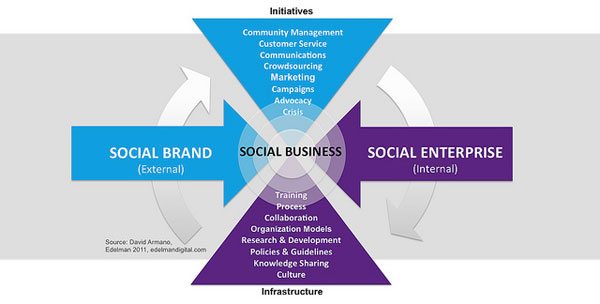
March 8, 2018; Generocity
March is “Social Entrepreneurship” month in the Generocity editorial calendar. Generocity is a Philadelphia-based group that provides local “social impact” news and events. At a recent roundtable discussion, and in this article in their series on the subject, six experts offered their definitions and challenges for the social enterprise sector.
This subject warrants regular attention at NPQ because these organizations, which attempt to address an unmet societal need or problem through market-driven approaches, continue to blur the lines of the traditional business, government, and nonprofit sectors. Making matters worse, the media often get the subject wrong. In March 2017, NPQ reported that the US-based Social Enterprise Alliance had 863 members; today, there are 969. The Social Enterprise World Forum wrestles with the sector’s international strengths and weaknesses. Consumer psychologists have determined that the public favors nonprofit over for-profit social enterprises, and so do the former Apple, Facebook, and Google employees who are joining an anti-tech addiction coalition called the Center for Humane Technology.
These are the leaders convened last week by Generocity to help further clarify this evolving subject:
- John Moore: Executive chair of ImpactPHL, a local impact investing advocacy organization, and longtime impact investor
- Kate Houstoun: Program officer of the Barra Foundation, which invests in both for-profit and nonprofit social enterprises, and former managing director of the Sustainable Business Network
- Heather Qader: Manager of business development for the City of Philadelphia’s Department of Commerce
- Cory Donovan: Program manager for ImpactPHL
- Simran Sidhu: Executive director of The HIVE at Spring Point, a new funding venture, and former executive director of education nonprofit YouthBuild Philadelphia
- Megan McFadden: Social impact strategist and former national director of brands and services for Mission Hub LLC, a certified B corporation
John Moore considers a social enterprise to be a for-profit with a product or service that will have “positive social externalities on a net basis.” For Megan McFadden, social enterprises can be either for-profit or nonprofit organizations, “but…bifurcating the two sometimes gets tricky.” Simran SidhuI cites a Philadelphia-based nonprofit enterprise that The Hive supports which “doesn’t make a positive return at this point in financial terms but could get there with some support.” Sidhul adds:
It is intriguing to see who this definition leaves out. Generally, the table has become less and less diverse as you talk social enterprise, and I think that alone is an issue.
When we’re in the nonprofit world, [leaders] tend to be a little more diverse, and I wonder if there’s some bridging that needs to happen in the middle of that, and if we start out with a very strict definition, whether we’re leaving some people out just by where it’s been defined so far.
Sign up for our free newsletters
Subscribe to NPQ's newsletters to have our top stories delivered directly to your inbox.
By signing up, you agree to our privacy policy and terms of use, and to receive messages from NPQ and our partners.
Kate Houstoun worries that nonprofit social enterprises have a more difficult time raising the funds necessary to begin, let alone scale, their businesses. Heather Qader points out the nuances of what can be expensive B Corps certification fees and organizations like ImpactPHL, which are at a more accessible midway point. Lastly, Cory Donovan values the organization’s intent:
The two-pocket system is CSR: “This is what we do [for our core business], and then, we’re [also] going to donate money” or whatever it is, as opposed to, “it’s built into the mission of the organization.”
The term “social enterprise” represents a spectrum of activity, not a label—a movement in entrepreneurship that continues to pick up momentum across the globe. A social enterprise uses commerce as a tool to maximize social impact; a merely ethical business creates profit for its shareholders while taking an ethics-based approach to issues like the environment and trade practices. Balancing the tension between upholding a social mission and maximizing the productivity of a business venture, social enterprises reinvest profits into their social mission rather than make payouts to shareholders. Although profits are not the primary motivation behind a social enterprise, sustainable “earned” revenue differentiates a social enterprise from a traditional charity that relies on outside funding from gifts, grants, contracts, and/or fees for service.
This statement from a previous NPQ article on this subject bears repeating here in conclusion:
The increased attention on social entrepreneurship is fantastic and having new eyes examine current and future problems is only beneficial. But it must be done within a framework of collaborative problem solving, an appreciation of what has been done before, what has and hasn’t worked and why, who the stakeholders are, and how to define and measure meaningful outcomes. The increasing hype over social good startups not only does a disservice to existing, proven nonprofits, but also threatens to disillusion the public of the importance and impact of the sector. In short, we must move past the sizzle into the steak.
—Jim Schaffer













